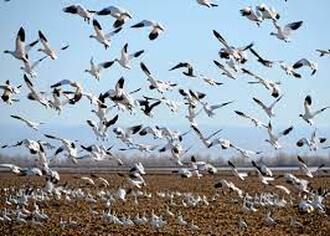ENVIRONMENTAL JUSTICE
|
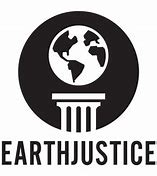
This was a two-part program linking Environmental Justice with the UN Declaration of Human Rights. In the first half, we reviewed definitions/descriptions of Environmental Justice going back to the origins of the movement in the 1980s. After reviewing some priorities established by the UN Development Group, we presented several examples of EJ programs in communities and schools, projects ranging from getting toxic waste removed from a Dallas neighborhood to middle school kids improving conditions on the playground and parking lots. Listen to this part of the program. Click here.

In the second half, we spoke with Chico Activist and fellow KZFR programmer Chris Nelson about the UN Declaration of Universal Human Rights. She recently led a vigil at the corner of 3rd and Main that included a reading of the summary of the Declaration. We read the concise version with its thirty element with Chris, then discussed what she sees as the most pressing human rights violations, both in the world and here in Chico. We also played a short clip by UN Secretary Antonio Guterres describing the pressing need for recognition of human rights globally. Listen to that portion of the program. Click here.
the wild and scenic film festival
friends of butte creek
with alan harthorn
eco 675 november 8, 2022
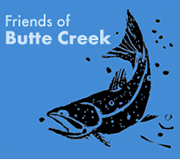
The Friends of Butte Creek work to protect, restore and enhance the natural habitats of wildlife in the Butte Creek Watershed. The organization evolved from the early efforts to create a collaborative community-based organization in the Butte Creek Watershed. When it became clear that environmental concerns and opinions were being ignored, FBC formed in 1999 to advocate for stronger environmental review, protection and enhancements to the watershed.

In this program, Executive Director Alan Harthorn told us about the many projects FBC is engaged into protect salmon runs in Butte Creek..He also spoke about the Wild and Scenic Film festival being conducted by the group to inform the public about wildlife issues and to raise funds for its ambitious and well-designed projects. Learn more about the organization and its work at www.buttecreek.org.
Listen to this excellent interview: Click below.
Listen to this excellent interview: Click below.
the ants are coming
with guillermo mash and don miller
eco 673 October 18, 2022
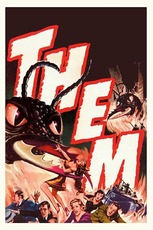
From time to time we like to get away from our usual topics of exploring environmental issues and delve into ecosystems one might not think about too often. This week, Steve delved into the theme of ANTS.
The program opened with a film trailer for Them, a 1954 science fiction/horror film, where ants, grown huge under the influence of nuclear testing in Nevada, terrify people and invade the sewers of Los Angeles.
Steve then conducted an interview with Guillermo the Ant, who who told us a little about how ants are constructed and how they operate. Up next was Chico State University Biology professor Don G Miller, a specialist in the social behavior of insects who explained why and how ants invade our picnics. Then we turned to theology to ask the intriguing question, were there ants on Noah’s Ark? After a film clip from David Attenborough's "The Incredible Lives of Ants," we heard about some of the work of scientist E. O. Wilson, who has argued that ants are capable of selfless behavior that might be a good model for humanity.
A fun and informative program; click below to listen.
The entire script is pasted following (not proofread).
Script for "The Ants Are Coming"
This is Ecotopia, Exploring Ecosystems: Environmental, Social, Technological. Today’s ecosystem is ANTS. The Ants Are Coming. Here’s the trailer from a 1954 science fiction film THEM
5:04 #1 Film Trailer: Them 2:32
5:06 Show topic/guest(s): 1:40This is Ecotopia on KZFR; I’m Stephen Tchudi, Susan Tchudi is away this week. From time to time we like to get away from our usual topics of exploring environmental issues and delve into ecosystems one might not think about too often. This week, our theme is ANTS.
We just heard the film trailer for Them, a 1954 science fiction/horror film, where giant ants invade the sewers of Los Angeles.
The film does actually embody some environmental issues, as these ants are the byproduct of nuclear bomb testing in the deserts of Nevada.
(It also deserves mentioning that in 2022 our US government has just purchased millions of dollars of radiation sickness medicines, anticipating that the nuclear threat may not be over.)
In Them, a little girl comes staggering out of the desert distraught. She is taken to a medical lab for investigation, and the doctor there, deducing from some of her frantic cries, waves a bottle of formic acid under her nose. “Them,” she cries, thus giving the film its title. Formic acid is the stuff of ant bites, where the sting comes from, and ants are of the biological family Formicidae. For-muh-seye-dee
In a few moments, I will be conducting an interview with Guillermo the Ant, who will tell us a little something about how ants are constructed and how they operate.
We’ll also hear from Chico State University Biology professor Don G Miller, a specialist in the social behavior of insects. who will tell us why ants invade our picnics.
Then we’ll turn to theology and philosophy and ask the intriguing question, were there ants on Noah’s Ark?
And finally, we’ll look at some of the work of scientist E. O. Wilson, who has argued that ants are capable of selfless behaviour that might be a good model for humanity.
5:08 Script for Guillermo the Ant 5:27
Steve: To kick off this segment, I am pleased to welcome to the studio, Guillermo the Ant, who is not only an attractive representative of the species, but also quite knowledgeable about the nature and behavior of other ants. Welcome to Ecotopia.
Guillermo: I am pleased to be here on KZFR, community radio.
S: Let me start with your physical structure, which is very impressive. In particular, you have large eyes. Can you see me clearly?
G: I have two big eyes, that are “compound”, with many units, sort of like the array of LEDs you'd see in a traffic light. Each lens sees one point in space and the whole eye and my tiny but effective brain integrates those images. So I can look directly at your face Yet see separately that you spilled some lunchtime spaghetti sauce on your shirt.
S: You also have what seem like antennae, two in fact. What function do they serve?
G: Well, sometimes you humans call things like them “feelers,” which is one of my antenna functions. But I also use them to smell (you notice I do not have one of those disgusting things you call a “nose”) and even to tap on the ground to send signals to other ants. I actually use touch and smell much more than sight. Antennae are great tools. You should grow them.
S: Speaking of the other ants, we know there are a lot of you. How big is your family tree?
G: I’m not a family tree expert, but I know that scientists have identified more than 13,800 species of ants, and, get this, they estimate that there are about 7000 species that haven’t even been identified! Get to work, scientists!
S: And how many of you and the family are on earth at any given moment?
G: As for totals, scientist E. O. Wilson (we call him the “ant guy” ) estimated that the total number of individual ants alive in the world at any one time is between one and ten quadrillion. Other ant guys say it’s more like twenty quadrillion. So there are about 1 million or maybe 10 million ants for every human on Earth. Please be careful where you step.
S: When I was a kid after watching the movie “Them” (and we just heard the trailer), I had nightmares about those giant ants with thingies hanging down from their face, the ants used them to crush humans! What are they?
G: Those are “mandibles,” sir, and I use them to grasp things. I’m not a giant ant, but let me tell you, I can lift about 50 times my own weight with my mandibles, and I do not even go to the gym. And scientists have concluded that my jaws are the quickest thing on earth, taking just a millisecond to clamp onto anything I want.
S: Legs. You have, by my count, six of them. I have only two, and often trip over my own legs. How do you keep them coordinated?
G: Good question, Steve. I use an "alternating tripod" system: so I move the front and back legs on one side, say the left, and the middle leg of the other, say the right, during one step. Then I switch sides. It’s a very effective way to get around. As you may have noticed, I can climb straight up walls. Multiple legs are handy; you should grow some more.
S: You have an admirably narrow waist. But you don’t go to the gym. Amazing.
G: Well my waist, as you call it, is actually a pinched spot above my thorax or body. (By the way, I am a cousin of the wasp, and you’ve heard the expression, “wasp waist-ed.”) And the thorax is where my legs are attached. The thorax mostly helps me get around.
S: And even more amazing, the biggest part of your body comes after that. Tell me about it.
G: That’s my abdomen. It actually contains two stomachs. I store food for myself in one stomach while the second stomach holds food which I share with other ants. The abdomen is also protected by an armored material called chitin, which helps to protecy my innards. The abdoment is also home to my stinger, with which I dispense formic acid and odors that serve as navigation aids.
S: You mentioned sharing food. The ant guy, E. O. Wilson spent years studying the behavior of you guys and observed that in the colonies there are divisions of responsibility, labor, and even physical structure. Tell me about that.
G: This is way too complex to explore in detail, and the specialties differ from one species to another. We are very good at adapting our roles.
But in general there’s the queen, who lays a gazillion eggs. She develops from one of the female ants, who actually give up the right to lay eggs.
Then there are adult workers who build the nest, forage, defend the colony--those are the females, sterile actually, because they gave up egg laying in order to serve their fellow ants. Workers are by far the most numerous individuals in the nest. Some of them are scouts that go looking for food or enemies; some are nurses taking care of the babies; some are warriors, who defend us and will sting humans if they get too close; other workers are actually farmers, raising crops inside the colony for our consumption; some are milkmaids who locate aphids and milk their sweet juices.
S. So who and what are the males?
And there are a few males around, who are responsibile for fertilizing the queen, and once done with that job, the males pretty much disappear. In fact, they die!
Many of your feminists say that’s the way it should be in your world, where women do the real work and the men are just around to procreate, which they have constantly on their limited minds, and then they perish or watch football.
S: And which of those kinds of ant are you?
G: None of the above. I am a radio journalist ant.
S: Thank you Guillermo the Ant, radio journalist, for being with me on Ecotopia.
~5:15 Music #2 he Ants Are Coming
Intro: This is Ecotopia on KZFR, and today’s topic is ANTS. On the phone with me now is Chico State Biology Professor Don Miller, who teaches courses in Entomology, Ecology, and Science and Human Values. His research interests include the social behaviors of insects, and we are going to ask him about some of the behaviors of ants. Welcome Don Miller.
--My initial question reflects our interest in ant behavior: How is it that ants are so quick to locate and invade our picnics?
--What leads them to the picnic: happy sounds, odors, music from our boombox?
--What foods are most interesting to them? How do they identify those foods?
--We know that some ants have specialized behaviors; are there particular ants assigned to finding our picnic?
--How does the first ant signal the others that a picnic is in progress?
--Where do the ants come from anyway? How far away might they be from the picnic?
--Once one ant comes to the picnic, we see trails of ants. How do ants lay down this trail? [What are “pheramones” and how do ants put them down?]
--Ants don’t seem to chow down on the spot; they carry the food away. What do they do with those giant crumbs? Do they share?
--Based on your interest in the social behavior of insects, is there anything else we should know about ants? (Realizing, of course, that you’ve written many articles on insect behavior and do entire courses in answer to that question.)
~5:35 Thank you, Don Miller of the CSU Biology Department, for being with me on Ecotopia.
You are listening to Ecotopia on KZFR, FM 90.1, Chico, California.
5:36 Music #3: The Animals are Coming
My inspiration for this program actually came from a question that popped into my head: “Were there insects such as ants on Noah’s ark?” I googled the question and it turns out there has been considerable discussion of the topic, most of it from people who regard the Bible as factual. I found the discussions quite interesting and want to read from some of them. For example, from a website https://answersingenesis.org, an uncredited author wrote:
“We have consistently received a flood (pun intended) of questions about whether there were insects on the Ark. This article will help us consider what the Bible teaches concerning insects and the Flood. For example, did God instruct Noah to take insects with him on the Ark? If not directly commanded by God to be included as passengers, would some insects have been beneficial and, if so, how or why might they have come on board?
In Genesis 6 God commanded Noah to take representatives “of every living thing of all flesh,” including those “of the birds after their kind, of animals after their kind, and of every creeping thing of the earth after its kind.” Where might insects be included in this list?...
In fact, [the author continues] the word typically translated bird in these passages in Hebrew is more literally “flying creature” and applies to more than just birds....Flying insects are mentioned in ... as a separate group—the creeping things that fly in Leviticus 11 and Deuteronomy 14, suggesting they were considered a particular grouping of flying creatures.
Insects, however, may be defined separately from most land animals.... Consequently there are arguments on both sides as to whether insects were of the kinds that were to be taken onto the Ark.
Arguments Against Insects Being Taken on the Ark
1. All the animals taken into the Ark are described as “flesh”... When it refers to living animals rather than simply to an animal’s body, this term is never conclusively used of insects.
2. However, Leviticus also says “For the life of the flesh is in the blood.” Insects do not have blood; instead they have hemolymph, which serves many of the same functions as blood....
3. This raises another important question about the original readers and hearers of the Levitical regulations. Would an ancient Israelite ever consider the gooey substances that ooze from a squished insect as being blood? If not, then it is unlikely that they were considered to be “living” in the same sense as man or beast. Furthermore, if the Israelites considered insects to be living creatures, then would an ancient Hebrew become unclean for the day if they happened to swat a fly, squash a mosquito, or step on a beetle.
4. Genesis also refers to saving creratures “in which is the breath of life.” Strictly speaking, Insects do not have nostrils (or lungs), and do not intake air the same way as most other land animals. Oxygen travels to insect tissues through tiny openings in the body walls called spiracles, and then through tiny, blind-ended, air-filled tubes called tracheae. For those who believe that insects were not commanded to be taken on board the Ark, this might be the strongest argument.
Arguments for Insects Being Taken on the Ark
1. Though disputed, some researchers believe that “every bird of every sort” is defined as “every flying creature of every sort,” “everything with wings” as in the HCSB and NIV, or “every winged creature.”. The phrase or equivalent of “every flying creature” could be taken to include flying insects and of course, the queen ant and the males do fly.
2. Some Biblical translations refer to god’s command to save “swarming creatures” (other translations use the phrase “creeping thing”). This could refer to insects as well as amphibians and lizards... So Leviticus includes at least some insects in the category of swarming things.
[The writer adds in favor that] Insects on board could have served many beneficial purposes, especially if Noah and his family grew plants in the Ark during the Flood. For example, ants could have helped plant health by clearing the detritus (dead organic matter) that might otherwise clutter and choke out light and certain nutrients. They could also have produced waste that serves as an essential fertilizer for many plants
[And in conclusion] We cannot know for sure whether Noah took insects on the Ark. However, a hypothesis that allows for many types of insects to be aboard the Ark as potential food sources, pollinators, plant caretakers, and possibly even honey producers seems like it is in accord with God’s commands to Noah in Genesis 6 and 7.
[And lastly] it would have been practically impossible (humanly speaking) to keep insects from joining the crew of the Ark. It does seem possible, then, that a number of types of insects were on the Ark. It is also reasonable to assume that God wouldn’t have specifically prevented insects from boarding the Ark
We can also consider God’s approval of ants in Proverbs: “Go to the ant, though sluggard! Consider her ways and be wise, which, having no captain, overseer or ruler, provides her supplies in the summer, and gathers her food in the harvest.”
5:45
As an example of the industry and that adaptivity of ants, here’s a short excerpt from David Attenboroguh’s “The Incredible Lives of Ants,” describing a colony in Australia, who’s dwelling is flooded. 2:30
5:48
So what, if anything, can we learn fromant behavior? I want to turn again to E. O. Wilson, the ant guy, who recently died at the age of 92. As a boy, he decided he wanted to become a natural scientist and he wanted to specialize in one speciess: ants. In his engaging book, Tales from the Ants, which I just finished reading, he tells wonderful stories of traveling the world to find the fastst ants, the slowest, the most violent, the most creative.
But Wilson’s research also led him to think about human behavior, specifically, the kind of altruism exhibited by ants and other creatures, which sacrifice personal comfort and even their lives, for the good of the group. Can this be genetic?
In the New York Times in 2012,Wilson wrote of Evolution and Our Inner Conflict
Are human beings intrinsically good but corruptible by the forces of evil, or the reverse, innately sinful yet redeemable by the forces of good? Are we built to pledge our lives to a group, even to the risk of death, or the opposite, built to place ourselves and our families above all else? Scientific evidence, a good part of it accumulated during the past 20 years, suggests that we are all of these things simultaneously. Each of us is inherently complicated. We are all genetic chimeras, at once saints and sinners — not because humanity has failed to reach some foreordained religious or ideological ideal — but because of the way our species originated across millions of years of biological evolution....
Within biology itself, the key to the mystery is the force that lifted pre-human social behavior to the human level. The leading candidate in my judgment is multilevel selection by which hereditary social behavior improves the competitive ability not of just individuals within groups but among groups as a whole. Its consequences can be plainly seen in the caste systems of ants, termites and other social insects. is not a new idea in biology. Charles Darwin correctly deduced its role, first in the insects and then in human beings — respectively in “On the Origin of Species” and “The Descent of Man.”...
Until about three million years ago the ancestors of Homo sapiens were mostly vegetarians, and they most likely wandered in groups from site to site where fruit, tubers, and other vegetable food could be harvested. Their brains were only slightly larger than those of modern chimpanzees. By no later than half a million years ago, however, groups of the ancestral species Homo erectus were maintaining campsites with controlled fire — the equivalent of nests — from which they foraged and returned with food, including a substantial portion of meat. Their brain size had increased to midsize, between that of chimpanzees and modern Homo sapiens. With groups crowded together at a single site, and an advantage added by cooperative nest building and hunting, social intelligence grew, along with the centers of memory and reasoning in the prefrontal cortex.
Probably at this point, ... a conflict ensued between individual-level selection, with individuals competing with other individuals in the same group, versus group-level selection, with competition among groups. The latter force promoted altruism and cooperation among all the group members. It led to group-wide morality and a sense of conscience and honor. The competitor between the two forces can be succinctly expressed as follows: within groups selfish individuals beat altruistic individuals, but groups of altruists beat groups of selfish individuals. Or, risking oversimplification, individual selection promoted sin, while group selection promoted virtue.
So it appeared that humans are forever conflicted by their prehistory of multilevel selection. They are suspended in unstable and constantly changing locations between the two extreme forces that created us. We are unlikely to yield completely to either force as an ideal solution to our social and political turmoil. To yield completely to the instinctual urgings born from individual selection would dissolve society. To surrender to the urgings from group selection would turn us into angelic robots — students of insects call them ants....5:31p:
5:53 This has been Ecotopia on KZFR, and I hope you enjoyed this foray into the ecosystems of ants (with some important implications for human behavior). I’m Stephen Tchudi.
Taking us out is James Brown linking ants and other human behavior: I Got Ants in My Pants.
5:04 #1 Film Trailer: Them 2:32
5:06 Show topic/guest(s): 1:40This is Ecotopia on KZFR; I’m Stephen Tchudi, Susan Tchudi is away this week. From time to time we like to get away from our usual topics of exploring environmental issues and delve into ecosystems one might not think about too often. This week, our theme is ANTS.
We just heard the film trailer for Them, a 1954 science fiction/horror film, where giant ants invade the sewers of Los Angeles.
The film does actually embody some environmental issues, as these ants are the byproduct of nuclear bomb testing in the deserts of Nevada.
(It also deserves mentioning that in 2022 our US government has just purchased millions of dollars of radiation sickness medicines, anticipating that the nuclear threat may not be over.)
In Them, a little girl comes staggering out of the desert distraught. She is taken to a medical lab for investigation, and the doctor there, deducing from some of her frantic cries, waves a bottle of formic acid under her nose. “Them,” she cries, thus giving the film its title. Formic acid is the stuff of ant bites, where the sting comes from, and ants are of the biological family Formicidae. For-muh-seye-dee
In a few moments, I will be conducting an interview with Guillermo the Ant, who will tell us a little something about how ants are constructed and how they operate.
We’ll also hear from Chico State University Biology professor Don G Miller, a specialist in the social behavior of insects. who will tell us why ants invade our picnics.
Then we’ll turn to theology and philosophy and ask the intriguing question, were there ants on Noah’s Ark?
And finally, we’ll look at some of the work of scientist E. O. Wilson, who has argued that ants are capable of selfless behaviour that might be a good model for humanity.
5:08 Script for Guillermo the Ant 5:27
Steve: To kick off this segment, I am pleased to welcome to the studio, Guillermo the Ant, who is not only an attractive representative of the species, but also quite knowledgeable about the nature and behavior of other ants. Welcome to Ecotopia.
Guillermo: I am pleased to be here on KZFR, community radio.
S: Let me start with your physical structure, which is very impressive. In particular, you have large eyes. Can you see me clearly?
G: I have two big eyes, that are “compound”, with many units, sort of like the array of LEDs you'd see in a traffic light. Each lens sees one point in space and the whole eye and my tiny but effective brain integrates those images. So I can look directly at your face Yet see separately that you spilled some lunchtime spaghetti sauce on your shirt.
S: You also have what seem like antennae, two in fact. What function do they serve?
G: Well, sometimes you humans call things like them “feelers,” which is one of my antenna functions. But I also use them to smell (you notice I do not have one of those disgusting things you call a “nose”) and even to tap on the ground to send signals to other ants. I actually use touch and smell much more than sight. Antennae are great tools. You should grow them.
S: Speaking of the other ants, we know there are a lot of you. How big is your family tree?
G: I’m not a family tree expert, but I know that scientists have identified more than 13,800 species of ants, and, get this, they estimate that there are about 7000 species that haven’t even been identified! Get to work, scientists!
S: And how many of you and the family are on earth at any given moment?
G: As for totals, scientist E. O. Wilson (we call him the “ant guy” ) estimated that the total number of individual ants alive in the world at any one time is between one and ten quadrillion. Other ant guys say it’s more like twenty quadrillion. So there are about 1 million or maybe 10 million ants for every human on Earth. Please be careful where you step.
S: When I was a kid after watching the movie “Them” (and we just heard the trailer), I had nightmares about those giant ants with thingies hanging down from their face, the ants used them to crush humans! What are they?
G: Those are “mandibles,” sir, and I use them to grasp things. I’m not a giant ant, but let me tell you, I can lift about 50 times my own weight with my mandibles, and I do not even go to the gym. And scientists have concluded that my jaws are the quickest thing on earth, taking just a millisecond to clamp onto anything I want.
S: Legs. You have, by my count, six of them. I have only two, and often trip over my own legs. How do you keep them coordinated?
G: Good question, Steve. I use an "alternating tripod" system: so I move the front and back legs on one side, say the left, and the middle leg of the other, say the right, during one step. Then I switch sides. It’s a very effective way to get around. As you may have noticed, I can climb straight up walls. Multiple legs are handy; you should grow some more.
S: You have an admirably narrow waist. But you don’t go to the gym. Amazing.
G: Well my waist, as you call it, is actually a pinched spot above my thorax or body. (By the way, I am a cousin of the wasp, and you’ve heard the expression, “wasp waist-ed.”) And the thorax is where my legs are attached. The thorax mostly helps me get around.
S: And even more amazing, the biggest part of your body comes after that. Tell me about it.
G: That’s my abdomen. It actually contains two stomachs. I store food for myself in one stomach while the second stomach holds food which I share with other ants. The abdomen is also protected by an armored material called chitin, which helps to protecy my innards. The abdoment is also home to my stinger, with which I dispense formic acid and odors that serve as navigation aids.
S: You mentioned sharing food. The ant guy, E. O. Wilson spent years studying the behavior of you guys and observed that in the colonies there are divisions of responsibility, labor, and even physical structure. Tell me about that.
G: This is way too complex to explore in detail, and the specialties differ from one species to another. We are very good at adapting our roles.
But in general there’s the queen, who lays a gazillion eggs. She develops from one of the female ants, who actually give up the right to lay eggs.
Then there are adult workers who build the nest, forage, defend the colony--those are the females, sterile actually, because they gave up egg laying in order to serve their fellow ants. Workers are by far the most numerous individuals in the nest. Some of them are scouts that go looking for food or enemies; some are nurses taking care of the babies; some are warriors, who defend us and will sting humans if they get too close; other workers are actually farmers, raising crops inside the colony for our consumption; some are milkmaids who locate aphids and milk their sweet juices.
S. So who and what are the males?
And there are a few males around, who are responsibile for fertilizing the queen, and once done with that job, the males pretty much disappear. In fact, they die!
Many of your feminists say that’s the way it should be in your world, where women do the real work and the men are just around to procreate, which they have constantly on their limited minds, and then they perish or watch football.
S: And which of those kinds of ant are you?
G: None of the above. I am a radio journalist ant.
S: Thank you Guillermo the Ant, radio journalist, for being with me on Ecotopia.
~5:15 Music #2 he Ants Are Coming
Intro: This is Ecotopia on KZFR, and today’s topic is ANTS. On the phone with me now is Chico State Biology Professor Don Miller, who teaches courses in Entomology, Ecology, and Science and Human Values. His research interests include the social behaviors of insects, and we are going to ask him about some of the behaviors of ants. Welcome Don Miller.
--My initial question reflects our interest in ant behavior: How is it that ants are so quick to locate and invade our picnics?
--What leads them to the picnic: happy sounds, odors, music from our boombox?
--What foods are most interesting to them? How do they identify those foods?
--We know that some ants have specialized behaviors; are there particular ants assigned to finding our picnic?
--How does the first ant signal the others that a picnic is in progress?
--Where do the ants come from anyway? How far away might they be from the picnic?
--Once one ant comes to the picnic, we see trails of ants. How do ants lay down this trail? [What are “pheramones” and how do ants put them down?]
--Ants don’t seem to chow down on the spot; they carry the food away. What do they do with those giant crumbs? Do they share?
--Based on your interest in the social behavior of insects, is there anything else we should know about ants? (Realizing, of course, that you’ve written many articles on insect behavior and do entire courses in answer to that question.)
~5:35 Thank you, Don Miller of the CSU Biology Department, for being with me on Ecotopia.
You are listening to Ecotopia on KZFR, FM 90.1, Chico, California.
5:36 Music #3: The Animals are Coming
My inspiration for this program actually came from a question that popped into my head: “Were there insects such as ants on Noah’s ark?” I googled the question and it turns out there has been considerable discussion of the topic, most of it from people who regard the Bible as factual. I found the discussions quite interesting and want to read from some of them. For example, from a website https://answersingenesis.org, an uncredited author wrote:
“We have consistently received a flood (pun intended) of questions about whether there were insects on the Ark. This article will help us consider what the Bible teaches concerning insects and the Flood. For example, did God instruct Noah to take insects with him on the Ark? If not directly commanded by God to be included as passengers, would some insects have been beneficial and, if so, how or why might they have come on board?
In Genesis 6 God commanded Noah to take representatives “of every living thing of all flesh,” including those “of the birds after their kind, of animals after their kind, and of every creeping thing of the earth after its kind.” Where might insects be included in this list?...
In fact, [the author continues] the word typically translated bird in these passages in Hebrew is more literally “flying creature” and applies to more than just birds....Flying insects are mentioned in ... as a separate group—the creeping things that fly in Leviticus 11 and Deuteronomy 14, suggesting they were considered a particular grouping of flying creatures.
Insects, however, may be defined separately from most land animals.... Consequently there are arguments on both sides as to whether insects were of the kinds that were to be taken onto the Ark.
Arguments Against Insects Being Taken on the Ark
1. All the animals taken into the Ark are described as “flesh”... When it refers to living animals rather than simply to an animal’s body, this term is never conclusively used of insects.
2. However, Leviticus also says “For the life of the flesh is in the blood.” Insects do not have blood; instead they have hemolymph, which serves many of the same functions as blood....
3. This raises another important question about the original readers and hearers of the Levitical regulations. Would an ancient Israelite ever consider the gooey substances that ooze from a squished insect as being blood? If not, then it is unlikely that they were considered to be “living” in the same sense as man or beast. Furthermore, if the Israelites considered insects to be living creatures, then would an ancient Hebrew become unclean for the day if they happened to swat a fly, squash a mosquito, or step on a beetle.
4. Genesis also refers to saving creratures “in which is the breath of life.” Strictly speaking, Insects do not have nostrils (or lungs), and do not intake air the same way as most other land animals. Oxygen travels to insect tissues through tiny openings in the body walls called spiracles, and then through tiny, blind-ended, air-filled tubes called tracheae. For those who believe that insects were not commanded to be taken on board the Ark, this might be the strongest argument.
Arguments for Insects Being Taken on the Ark
1. Though disputed, some researchers believe that “every bird of every sort” is defined as “every flying creature of every sort,” “everything with wings” as in the HCSB and NIV, or “every winged creature.”. The phrase or equivalent of “every flying creature” could be taken to include flying insects and of course, the queen ant and the males do fly.
2. Some Biblical translations refer to god’s command to save “swarming creatures” (other translations use the phrase “creeping thing”). This could refer to insects as well as amphibians and lizards... So Leviticus includes at least some insects in the category of swarming things.
[The writer adds in favor that] Insects on board could have served many beneficial purposes, especially if Noah and his family grew plants in the Ark during the Flood. For example, ants could have helped plant health by clearing the detritus (dead organic matter) that might otherwise clutter and choke out light and certain nutrients. They could also have produced waste that serves as an essential fertilizer for many plants
[And in conclusion] We cannot know for sure whether Noah took insects on the Ark. However, a hypothesis that allows for many types of insects to be aboard the Ark as potential food sources, pollinators, plant caretakers, and possibly even honey producers seems like it is in accord with God’s commands to Noah in Genesis 6 and 7.
[And lastly] it would have been practically impossible (humanly speaking) to keep insects from joining the crew of the Ark. It does seem possible, then, that a number of types of insects were on the Ark. It is also reasonable to assume that God wouldn’t have specifically prevented insects from boarding the Ark
We can also consider God’s approval of ants in Proverbs: “Go to the ant, though sluggard! Consider her ways and be wise, which, having no captain, overseer or ruler, provides her supplies in the summer, and gathers her food in the harvest.”
5:45
As an example of the industry and that adaptivity of ants, here’s a short excerpt from David Attenboroguh’s “The Incredible Lives of Ants,” describing a colony in Australia, who’s dwelling is flooded. 2:30
5:48
So what, if anything, can we learn fromant behavior? I want to turn again to E. O. Wilson, the ant guy, who recently died at the age of 92. As a boy, he decided he wanted to become a natural scientist and he wanted to specialize in one speciess: ants. In his engaging book, Tales from the Ants, which I just finished reading, he tells wonderful stories of traveling the world to find the fastst ants, the slowest, the most violent, the most creative.
But Wilson’s research also led him to think about human behavior, specifically, the kind of altruism exhibited by ants and other creatures, which sacrifice personal comfort and even their lives, for the good of the group. Can this be genetic?
In the New York Times in 2012,Wilson wrote of Evolution and Our Inner Conflict
Are human beings intrinsically good but corruptible by the forces of evil, or the reverse, innately sinful yet redeemable by the forces of good? Are we built to pledge our lives to a group, even to the risk of death, or the opposite, built to place ourselves and our families above all else? Scientific evidence, a good part of it accumulated during the past 20 years, suggests that we are all of these things simultaneously. Each of us is inherently complicated. We are all genetic chimeras, at once saints and sinners — not because humanity has failed to reach some foreordained religious or ideological ideal — but because of the way our species originated across millions of years of biological evolution....
Within biology itself, the key to the mystery is the force that lifted pre-human social behavior to the human level. The leading candidate in my judgment is multilevel selection by which hereditary social behavior improves the competitive ability not of just individuals within groups but among groups as a whole. Its consequences can be plainly seen in the caste systems of ants, termites and other social insects. is not a new idea in biology. Charles Darwin correctly deduced its role, first in the insects and then in human beings — respectively in “On the Origin of Species” and “The Descent of Man.”...
Until about three million years ago the ancestors of Homo sapiens were mostly vegetarians, and they most likely wandered in groups from site to site where fruit, tubers, and other vegetable food could be harvested. Their brains were only slightly larger than those of modern chimpanzees. By no later than half a million years ago, however, groups of the ancestral species Homo erectus were maintaining campsites with controlled fire — the equivalent of nests — from which they foraged and returned with food, including a substantial portion of meat. Their brain size had increased to midsize, between that of chimpanzees and modern Homo sapiens. With groups crowded together at a single site, and an advantage added by cooperative nest building and hunting, social intelligence grew, along with the centers of memory and reasoning in the prefrontal cortex.
Probably at this point, ... a conflict ensued between individual-level selection, with individuals competing with other individuals in the same group, versus group-level selection, with competition among groups. The latter force promoted altruism and cooperation among all the group members. It led to group-wide morality and a sense of conscience and honor. The competitor between the two forces can be succinctly expressed as follows: within groups selfish individuals beat altruistic individuals, but groups of altruists beat groups of selfish individuals. Or, risking oversimplification, individual selection promoted sin, while group selection promoted virtue.
So it appeared that humans are forever conflicted by their prehistory of multilevel selection. They are suspended in unstable and constantly changing locations between the two extreme forces that created us. We are unlikely to yield completely to either force as an ideal solution to our social and political turmoil. To yield completely to the instinctual urgings born from individual selection would dissolve society. To surrender to the urgings from group selection would turn us into angelic robots — students of insects call them ants....5:31p:
5:53 This has been Ecotopia on KZFR, and I hope you enjoyed this foray into the ecosystems of ants (with some important implications for human behavior). I’m Stephen Tchudi.
Taking us out is James Brown linking ants and other human behavior: I Got Ants in My Pants.
the downside of big solar
with bill helmer and shannon salter
eco 671 october 4, 2022

Our guests on this program spoke about the damage being done in the Nevada and Mojave Deserts by huge solar installations that devastate the landscape, destroy or displace wildlife, and in general, make a mess of things on public, Bureau of Land Management (our) land. They described the flawed and politically driven approval process and told about what activists have done and are doing to expose the current developments and offer alternatives to the future. We need alternative energy sources to get away from fossil fuels, but these desert installations are a poster child for misdirection.
Bill Helmer is a retired Tribal Historic Preservation Officer who worked for the Timbisha Shoshone Tribe from 1998-2003, and the Big Pine Paiute Tribe of the Owens Valley from 2004-2015. He has a Master's Degree in Geography from Chico State University, and now lives in Independence, CA.
Shannon Salter teaches in the English Department at the University of Nevada, Las Vegas. A writer and activist, she has created mojavegreen.org, which documents the invasion of Big Solar. She also organizes vigils at the Yellow Pine Solar project and has spent many hours camping outside the project.
Listen to the program, click below.
Bill Helmer is a retired Tribal Historic Preservation Officer who worked for the Timbisha Shoshone Tribe from 1998-2003, and the Big Pine Paiute Tribe of the Owens Valley from 2004-2015. He has a Master's Degree in Geography from Chico State University, and now lives in Independence, CA.
Shannon Salter teaches in the English Department at the University of Nevada, Las Vegas. A writer and activist, she has created mojavegreen.org, which documents the invasion of Big Solar. She also organizes vigils at the Yellow Pine Solar project and has spent many hours camping outside the project.
Listen to the program, click below.
DIVINING CHAOS
WITH AVIVA rAHMANI
ECO 667 AUGUST 30, 2022
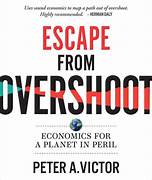
Our guest on this program Aviva Rahmani, author of a book from the Village Press titled Divining Chaos: The Autobiography of an Idea. Her artwork and writing involve performance, transformation of space, interdisciplinarity, activism, and more. One striking image in Aviva’s book shows a tree with a painted blue stripe spiraling up its trunk. Next to it are a half dozen black cows, placidly looking on. This is a part of Aviva’s Blued Trees Project. The project also involves original music, and we played the Overture to the Blued Trees Symphony to lead off the interview.
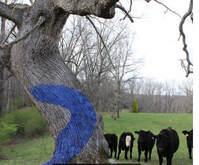
Her education includes study at Plymouth University in England, Lehman College in New York City, the Julliard School of Music, the California Institute of the Arts, and Cooper Union in New York. Her artwork and installations have been seen around the world, and she has a strong vision of how art (in the broadest sense) can help us see our way out of a chaotic and declining world.
Listen to the program: Click below.
Listen to the program: Click below.
power
with richard heinberg
eco 664 9 august 2022
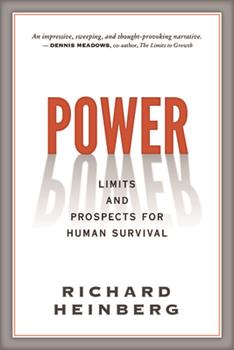
Richard Heinberg is author of Power: Limits and Prospects for Human Survival, published by New Society. He’s the author of thirteen previous books including The Party’s Over, Powerdown, and Peak Everything. We interviewed him several years ago about his book, The End of Growth, which turned us into growth-aphobes. He is presently Senior Fellow of the Post Carbon Institute in Santa Rosa. Richard is also a violinist, illustrator, and book designer. He published his first book in 1989, Memories and Visions of Paradise: Exploring the Universal Myth of a Lost Golden Age, and we’ll spoke about his intellectual journey from the golden age to power.
We discussed his theory that power is, in essence, the root of our current crises: power as exercised through money, weapons, and mass communications. He says there is no single solution to the crisis, but his book describes a number of ways in which humans could self regulate through:
Taboos, Souls, and Enlightenment
Taxes, Regulations, Activism, and Rationing
Games, Disarmament, and Degrowth
Learning to Live Happily Within Limits
Trade-Offs Along the Path of Self-Restraint
Questioning Technology
Lessening Inequality
Population Control and Steadiness
Beauty, Spirituality, and Happiness
We highly recommend his book, which is available from New Society. Richard's website, including his "Museletter", is https://richardheinberg.com/
Listen to the program: Click Below
We discussed his theory that power is, in essence, the root of our current crises: power as exercised through money, weapons, and mass communications. He says there is no single solution to the crisis, but his book describes a number of ways in which humans could self regulate through:
Taboos, Souls, and Enlightenment
Taxes, Regulations, Activism, and Rationing
Games, Disarmament, and Degrowth
Learning to Live Happily Within Limits
Trade-Offs Along the Path of Self-Restraint
Questioning Technology
Lessening Inequality
Population Control and Steadiness
Beauty, Spirituality, and Happiness
We highly recommend his book, which is available from New Society. Richard's website, including his "Museletter", is https://richardheinberg.com/
Listen to the program: Click Below
a history of earth's climate
with steven earle
eco 663 2 august 2022
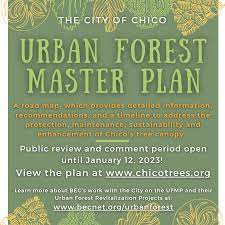
Our guest on the program was Dr. Steven Earle, author of A Brief History of the Earth’s Climate: Everyone’s Guide to the Science of Climate Change, published by New Society. It’s compelling book that lives up to its title and subtitle: It is brief--under 200 pages--but incredibly detailed. And it is written in language accessible to nonspecialists, including us.
In an enlightening hour he spoke with us about the effect of the sun on global warming, ocean currents, volcanic eruptions, and more, including the fascinating topic of "self regulating" cycles and feedback loops that have helped preserve earth's "Goldilocks Climate."
He also warned about the "plague of people" who are the major contributors to climate change. He discussed tipping points as well as some ways in we might lift the fog of inaccurate understanding of climate change and how we could strategize to pull back from the brink.
Dr. Earle lives on Gabriola Island, just off the east coast of Vancouver Island. He earned a BSc in geology from the Univerity of British Columbia and a PhD in geochemistry from Imperial College, London. He taught courses in earth science at Vancouver Island University, and he credits that teaching for much of the information in this book. He also grows food and drives the community bus on Gabriola Island.
Listen to the program: Click below.
In an enlightening hour he spoke with us about the effect of the sun on global warming, ocean currents, volcanic eruptions, and more, including the fascinating topic of "self regulating" cycles and feedback loops that have helped preserve earth's "Goldilocks Climate."
He also warned about the "plague of people" who are the major contributors to climate change. He discussed tipping points as well as some ways in we might lift the fog of inaccurate understanding of climate change and how we could strategize to pull back from the brink.
Dr. Earle lives on Gabriola Island, just off the east coast of Vancouver Island. He earned a BSc in geology from the Univerity of British Columbia and a PhD in geochemistry from Imperial College, London. He taught courses in earth science at Vancouver Island University, and he credits that teaching for much of the information in this book. He also grows food and drives the community bus on Gabriola Island.
Listen to the program: Click below.
BUTTE ENVIRONMENTAL COUNCIL
WITH CAITLIN DALBY
ECO 662 26 JULY 2022
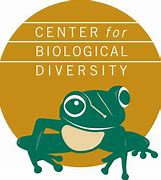
Our guest was Caitlin Dalby, the dynamic Executive Director of the Butte Environmental Council, the leading advocate for environmental change and preservation in the region. She filled us in on numerous BEC projects, including workshops and field trips for young people, a coming environmental forum, the Endangered Earth Faire, and the Bicycle Music Festival. She also reviewed BEC's advocacy work in suburban sprawl, urban infill, water preservation, and sustainable housing. More about BEC at becnet.org, where you can also make contributions to support their outstanding work.
Listen to the program: Click below.
Listen to the program: Click below.
CHICO AND OROVILLE HOUSING PLANS
WITH ADDISON WINSLOW
ECO 661 JULY 19, 2022
This program continued our series on housing needs and development in Chico and Butte County. Our guest was Addison Winslow a housing and land analyst, who has been working on behalf of the Butte Environmental Council to critique housing plans being developed by both cities. Addison is remarkably knowledgeable about housing needs and plans in our area, and has offered a detailed critique to both cities.The interview is an educational piece as well; listen to it and you will have a much richer understanding of the issues facing our communities.Listen to or download the program: Click here.
HOUSING FOR ALL
WITH THERESA O'CONNOR AND MARY KAY BENSON
ECO 659 JUNE 28, 2022

In this program we spoke with Theresa O’Connor who works with Butte County Shelter for all, a local organization working on housing for homeless people and for anyone who needs housing and Mary Kay Benson, currently volunteering with BCSA and North State Shelter Team (NSST)
Butte County Shelter for All describes itself on its facebook page as “a housing and homelessness advocacy group that believes everyone deserves a safe shelter. We're working to destigmatize attitudes towards homeless folks and renters, and to create shelter and housing options for everyone who needs housing.” The North State Shelter team is providing direct services to the homeless, including their own shower trailer.They are also submitting plans to the city for a campground for people whose only home is a trailer.
Listen to the program.
Butte County Shelter for All describes itself on its facebook page as “a housing and homelessness advocacy group that believes everyone deserves a safe shelter. We're working to destigmatize attitudes towards homeless folks and renters, and to create shelter and housing options for everyone who needs housing.” The North State Shelter team is providing direct services to the homeless, including their own shower trailer.They are also submitting plans to the city for a campground for people whose only home is a trailer.
Listen to the program.
RIVER UNDER THE RIVER
with Barbara Vlamis
eco 656 14 june 2022

Our guest was Barbara Vlamis, Executive Director of AquAlliance, "defending NorthState waters." First we heard about a new AquAlliance song written by MaMuse--Sarah Nutting and Karisha Longecker. River Under the River describes the misuse of our water system and calls the listener to action. It is dedicated to AquAlliance, and MaMuse is having a fundraiser via GoFundMe. Click here to obtain a recording of the song and to make a contribution to AquA.
Barbara then described current AquAlliance activities, including filing lawsuits against three districts of the Sustainable Groundwater Management Act: Butte, Vina, and Glenn. AquA argues that they are failing to meet the requirements of the law and are putting NorthState groundwaters at risk. Learn more about those actions at AquAlliance.net. Listen to or download the program: click here.
Barbara then described current AquAlliance activities, including filing lawsuits against three districts of the Sustainable Groundwater Management Act: Butte, Vina, and Glenn. AquA argues that they are failing to meet the requirements of the law and are putting NorthState groundwaters at risk. Learn more about those actions at AquAlliance.net. Listen to or download the program: click here.
environmental justice for chico
with nick hart and molly marcussen
eco 655 7 june 2022

In this program we spoke with two people who are working on the Environmental Justice element of the forthcoming Chico City Plan revision. Nick Hart is a Civic Spark Fellow spending the year with the City of Chico Planning Department. Molly Marcussen is a Planner in that department. They told us about Senate Bill 1000 that requires cities to develop an Environmental Justice Planning Element to include assessment of: Pollution Exposure and Air Quality, Public Facilities, Food Access, Safe and Sanitary Homes, Physical Activity, and Community Engagement. They explained how they go about gathering and assessing data for these components. This is an enormously complex process and we were impressed and pleased with how they are handling it. Full details and a draft of the plan are available at www.chico.ca.us/environmental-justice. Community input is being sought through surveys on the website as a well as public gatherings. Participate!!!
To listen to or download the program: click here
To listen to or download the program: click here
ROUNDUP AND FOREVER CHEMICALS
WITH CAREY GILLAM
ECO 654 31 MAY 2022

Our guest on this program was Carey Gillam an investigative journalist whom we interviewed several years ago about her book Whitewash – The Story of a Weed Killer, Cancer and the Corruption of Science. That book was about Monsantos weedkiller, glyphosate, a.k.a , Roundup. (Monstanto has since been purchased by Bayer AG of Germany.) She has continued to follow Monsanto in numerous articles and another book,The Monsanto Papers - Deadly Secrets, Corporate Corruption and One Man's Search for Justice. Carey has published in mainstream media, including The New York Times and The Guardian. However, she is also promoting independent journalism with her web site UnSpun and serving as Managing Editor for The New Lede an independent news source on environmental issues. We asked her about the need for independent journalism before turning to various lawsuits against Monsanto/Bayer as well as other problems with what have been labeled “forever chemicals.” Finally we discussed her commitment to spreading the word and her hopes that humans can “come together to try to clean up the disasters that we can’t so easily see.” You can learn more about Carey and her work at https://www.thenewlede.org, https://careygillam.substack.com, and https://careygillam.com
Listen to or download the program: click here.
Listen to or download the program: click here.
environmental psychology
with kim michl
eco 653 24 may 2022

Kim Michl was our guest. A recent CSU graduate, Kim told us about Environmental Psychology, which looks at the impact of environmental change and pressures on people's response to the world. She told us about her research into how practicing connecting with nature affects how people think and feel about their world. She found that, indeed, people who practice in the field of permaculture do have better feelings about themselves and their world than those who aren't aware of the field and its practices. She also described a new project in Chico, Climate Cafe, that she'll be joining in the fall.
Listen to or download the recording.
Listen to or download the recording.
THINKING ABOUT THE ENVIRONMENT
(AND MORALITY) WITH pATRICK NEWMAN
ECO 651 10 MAY 2022

Patrick Newman is well known in Chico as an outspoken activist, particularly on homeless issues, but more broadly on progressive causes. He also conducts Friends on the Street offering the homeless food and supplies Sundays at the Chico plaza. Patrick also has deep and complex thoughts about morality, and how moral questions intertwine with social justice and environmental concerns. This was a three way conversation with Patrick, Susan, and Steve, though Steve was left in the dust by the complexity and thoughtfulness of the other two's ideas. A must listen show.
Click here to listen or download.
Click here to listen or download.
URBAN SPRAWL AND THE VALLEY'S EDGE PROJECT
WITH KIM MICHL AND ELISA MACLEOD
ECO 650 3 MAY 2022
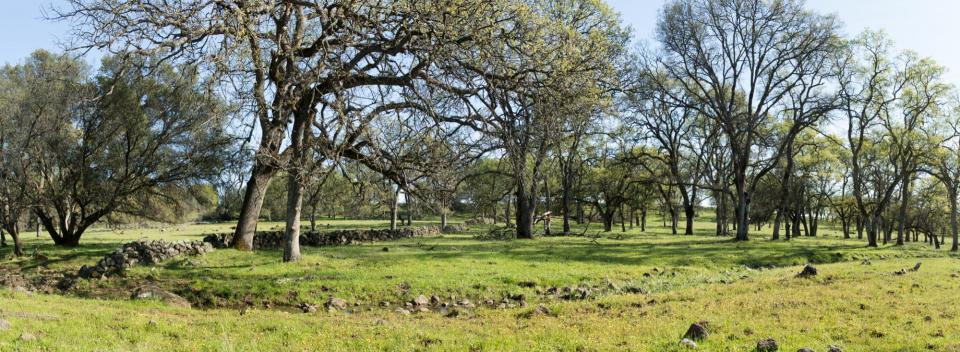
Kim Michl and Elisa MacLeod are graduating students at Chico State University. They have been conducting research into the proposed Valley’s Edge development in southwest of Chico. Their description of the project was alarming at the least: over a thousand acres of pristine oak savannah to be covered with over a thousand luxury homes, with token “affordable” housing to comply with state law. A draft Environmental Impact Statement has been closely examined by a number of interested citizens and found to be wanting because of loss of habitat for endangered species, carbon emissions, and destruction of open space. . Kim and Elisa articulately explained why Chico Citizens need to resist this urban sprawl.
To read more about the specific plan, go to: https://chico.ca.us/post/valleys-edge-specific-plan
Listen to the program: click here.
To read more about the specific plan, go to: https://chico.ca.us/post/valleys-edge-specific-plan
Listen to the program: click here.
campfire restoration project
with janeva sorensen and stacey wear
eco 649 20 april 2022

The Campfire Restoration Project offers a wide range of camps, workshops, walks, and other events that deal with both the technical and spiritual revitalization of Paradise, California. Janeva and Stacy spoke about projects ranging from grey water systems to composting from spiritual renewal to Native Environmental practices. Their mission is to promote ecological stewardship through education, collaborative community action, and sharing resources. Learn more at http://campfirerestorationproject.org Listen to or download the program by clicking here.
safe streets
with bryce goldstein
eco 648 13 april 2022

Our guest was Chico activist Bryce Goldstein who, with others, has formed Chico Safe Streets. It is dedicated to improving conditions principally for bicyclists and pedestrians. We spoke about the bicycle lanes and pathways that already exist in the area, crediting their positive contributions, but discussing weaknesses in the system as well. Some imaginative alternatives were considered as well. Pedestrian traffic is also in need of attention,making it safe for adults and children to walk near or on area streets without fear of traffic entanglements. Literally as we were speaking, a skateboarder in Chico was hit by a car in the downtown area. 'Nuff said.
Listen to or Download the program. Click here..
Listen to or Download the program. Click here..
making shift happen
with nya van Leuvan and rod fujita
eco 645 29 march 2022
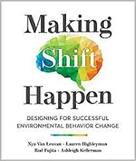
Our guests were Nya Van Leuvan and Rod Fujita coauthors (with Lauren Highleyman and Ashleigh Kellerman) of Making Shift Happen: Designing for Successful Behavior Change (New Society, 2022). They are the co-founders of Root Solutions, an nonprofit group that helps organizations, companies and governmental agencies to identify behavioral leverage points in their initiatives, then assist in the design and implementation of cost-effective and scalable behavioral strategies.
Nya Van Leuvan is the Executive Director. She has an MA from the School of Human Evolution and Social Change at the University of Arizona. She has created educational and outreach materials for the National Science Foundation and the National Geographic Society on the fragility of earth’s coral reef ecosystems.
Rod Fujita is the other co-founder of Root Solutions. In addition to his role at Root Solutions, Rod is the Director of Research and Development at Environmental Defense Fund’s Oceans Program where he has been working with fishing communities, regulators and business leaders around the world to improve fishery policies for more than 25 years.
As one reviewer noted, Making Shift Happen is “a workshop in a book,” a detailed exploration of behavior change processes and strategies. The first half outlines the how change makers can research, focus, design, and implement projects. The second half describes behavioral building blocks that help activists engage others by helping them develop a sense of belonging and optimistically proceed with their projects. The final chapter focuses on “nature’s longevity,” discussing not only the need to sustain environmental actions but to “take care of ourselves, so that we have the endurance and empathy needed to continue our life’s work.”
Listen to interview: click here.
Learn more about Root Solutions: https://www.therootsolutions.org
Learn more about or buy the book: newsociety.com
Nya Van Leuvan is the Executive Director. She has an MA from the School of Human Evolution and Social Change at the University of Arizona. She has created educational and outreach materials for the National Science Foundation and the National Geographic Society on the fragility of earth’s coral reef ecosystems.
Rod Fujita is the other co-founder of Root Solutions. In addition to his role at Root Solutions, Rod is the Director of Research and Development at Environmental Defense Fund’s Oceans Program where he has been working with fishing communities, regulators and business leaders around the world to improve fishery policies for more than 25 years.
As one reviewer noted, Making Shift Happen is “a workshop in a book,” a detailed exploration of behavior change processes and strategies. The first half outlines the how change makers can research, focus, design, and implement projects. The second half describes behavioral building blocks that help activists engage others by helping them develop a sense of belonging and optimistically proceed with their projects. The final chapter focuses on “nature’s longevity,” discussing not only the need to sustain environmental actions but to “take care of ourselves, so that we have the endurance and empathy needed to continue our life’s work.”
Listen to interview: click here.
Learn more about Root Solutions: https://www.therootsolutions.org
Learn more about or buy the book: newsociety.com
SUSTAINABILITY MISEDUCATION
WITH KATIE WORTH
ECO 644 22 March 2022
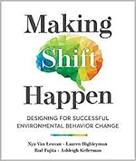
Our guest tonight was Katie Worth. Katie is the author of Miseducation: How Climate Change Is Taught in America. She is an Emmy and Edward R. Murrow Award-winning investigative journalist. From 2015 to 2021, she worked for the PBS series FRONTLINE on enterprise investigations and multimedia stories about science and politics. Her work has appeared in Scientific American, National Geographic, Slate, The Wall Street Journal, and was included in The Best American Science and Nature Writing 2016. Her book is based on interviews with hundreds of students and teachers and surveys of state standards and textbook content. She concludes that although some teachers are doing detailed and even-handed coverage of sustainability issues and problems, many are not, due to lack of training, political and parental pressures, misleading textbooks, and more.
Listen to or download the interview: Click here.
Listen to or download the interview: Click here.
project censored
with andy lee roth
eco 642 8 march 2022
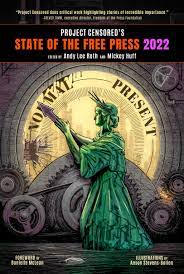
Censorship was the topic of this program, but not of the way in which we usually think of it--with authorities redlining, suppressing, or burning books. Project Censored, established forty-five years ago, publishes an annual book describing important stories that do not receive full publicity for a variety of reasons that lead to de-facto censorship: we just don’t hear about them. We’re not talking about “fake news” here, but legitimate news, including environmental issues, that are essentially suppressed by a variety of powers. Our guest was Andy Lee Roth, the Associate Director of Project Censored and co-editor of Project Censored's State of the Free Press 2022. He coordinates the Project’s Campus Affiliates Program, a news media research network of several hundred students and faculty at two dozen colleges and universities across North America. He earned a PhD in sociology at the UCLA, and a BA in sociology and anthropology at Haverford College. Roth serves on the board of the Media Freedom Foundation, the sponsoring organization of Project Censored.
We found this an especially engaging interview, as Andy helped us understand the pressures put on news media not to highlight particular stories, the effect of social media on journalism in our time, the decline of print news, and how to identify reliable sources of news.
Learn more about Project Censored.
Listen to or download the program
We found this an especially engaging interview, as Andy helped us understand the pressures put on news media not to highlight particular stories, the effect of social media on journalism in our time, the decline of print news, and how to identify reliable sources of news.
Learn more about Project Censored.
Listen to or download the program
butte county landfill
with craig cissell and eric miller
eco 631 1 march 2022
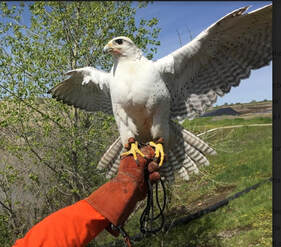
Pictured: The resident falcon at the Butte County Landfill. The landfill uses falcons as a humane way to keep seagulls from the landfill. Seagulls eat trash, carry trash, and can spread disease, etc. Crystal, a White Icelandic Gyre falcon.
Our guests were Eric Miller, Manager of the Waste Management Division and Craig Cissell, Deputy Director of Solid Waste, Butte County. There’s much to learn about what goes on with the things we get rid of. They spoke about the operation of the Butte County Neal Road Landfill, where there is quite literally much more than meets the eye. They described the organization of the landfill, the kinds of waste that can be deposited, and the future of the landfill, which at the present rate is about twenty-five years. We also discussed waste in general in our consumer-and-products oriented world and efforts being made at the landfill to reclaim and recycle some materials. As part of the discussion we learned how the Facility captures methane produced by decaying organic matter and the effects of California's new law prohibiting the disposal of organic waste as "garbage." This was a fascinating and informative interview.
Pictured: The resident falcon at the Butte County Landfill. The landfill sues falcons as a humane way to keep seagulls from the landfill. Seagulls eat trash, carry trash, and can spread disease, etc. Crystal, a White Icelandic Gyre falcon.
Click here to listen to or download the recording.
Our guests were Eric Miller, Manager of the Waste Management Division and Craig Cissell, Deputy Director of Solid Waste, Butte County. There’s much to learn about what goes on with the things we get rid of. They spoke about the operation of the Butte County Neal Road Landfill, where there is quite literally much more than meets the eye. They described the organization of the landfill, the kinds of waste that can be deposited, and the future of the landfill, which at the present rate is about twenty-five years. We also discussed waste in general in our consumer-and-products oriented world and efforts being made at the landfill to reclaim and recycle some materials. As part of the discussion we learned how the Facility captures methane produced by decaying organic matter and the effects of California's new law prohibiting the disposal of organic waste as "garbage." This was a fascinating and informative interview.
Pictured: The resident falcon at the Butte County Landfill. The landfill sues falcons as a humane way to keep seagulls from the landfill. Seagulls eat trash, carry trash, and can spread disease, etc. Crystal, a White Icelandic Gyre falcon.
Click here to listen to or download the recording.
FIGHTING (SUB)URBAN SPRAWL
WITH JARED GEISER AND GRACE MARVIN
Eco 640 february 22, 2022

Our guests on this program are concerned with urban/suburban sprawl in Chico, specifically the proposed Stonegate and Valley's Edge projects in southeast Chico. Jared is on Butte Environmental Advocacy Committee and was strategic in writing the response to the draft Environmental Impact Review for Valley's Edge. He's a Certified California Naturalist and a local advocate for climate action and environmental stewardship. Grace Marvin is Conservation Group of the Blue Oak Group of the Sierra Club and has been fighting sprawl with that organization and with Smart Growth Advocates, which has been opposing urban sprawl projects for the past several years.
Listen to or download the interview with Jared.
Listen to or download the interview with Grace.
Listen to or download the interview with Jared.
Listen to or download the interview with Grace.
CHICO VELO WILDFLOWER CENTURY
with Ashley KoLler
GRID ALTERNATIVES
with Shyla Black
ECO 639 15 FEBRUARY 2022

In the first half of the program, we interviewed Ashley Koller, Executive Director of Chico Velo, which sponsors the world famous Wildflower Century, this year in late April. The ride often attracts as many as 3000 riders, though participation has been a bit down due to Covid. Registration and a Wildflower hoopla take place on April 23, with the ride itself on the 24th.The actual ride features a number of different routes, from a shorter kids' (and adults) ride up to a super challenging 125 mile ride with numerous hill climbs. Ashley also shared with us some of Chico Velo's community projects, including bike safety, trail cleaning, and valet services. Learn more about Chico Velo and the Wildflower Century at
https://www.chicovelo.org.
Listen to the program: Click below.
https://www.chicovelo.org.
Listen to the program: Click below.

We spoke with Shyla Black, Project Manager for North Valley Grid Alternatives, a non-profit company that provides no-cost or low-cost solar for low income people and those in areas of high pollution. It also provides training in solar installation, which can be a stepping stone to employment and a career. She explained the many projects of Grid Alternatives and the various ways they engage with the community. GRID Alternatives envisions a rapid, equitable transition to a world powered by renewable energy that benefits everyone. Their mission is to build community-powered solutions to advance economic and environmental justice through renewable energy. Check them out at https://gridalternatives.org/
Listen to the interview: Click below.
Listen to the interview: Click below.
DALBIR'S INDIA
with Dalbir Singh
Eco 638 8 February 2022

Our guest on this program was an old friend, Dalbir Singh from the Punjab region of India. About ten years ago we toured the area with him as tour guide. He operates Dalbir's India and continues to conduct highly individualized and informative tours of India, despite many complications due to Covid. We spoke with him, first, about his business and then about various topics about India, including the effects of Covid, the Green Revolution, environmental issues, and more. We were (again) impressed by Dalbir's spirituality and his interest in helping visitors to India understand it's deep cultural and religious roots. Learn more about Dalbir's India: click here.
SMITHSONIAN EXHIBIT AND LOCAL FLAX
with Sandy Fisher
BUTTE COLLEGE SUSTAINABILITY
with Mariah Swyrs
Eco 637 1 February 2022
with Sandy Fisher
BUTTE COLLEGE SUSTAINABILITY
with Mariah Swyrs
Eco 637 1 February 2022
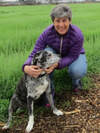
Our first guest on this program was Sandy Fisher, local weaver, flax grower, and all around craftsperson. She told us about having been accepted to an art and sustainability exhibit at the Smithsonian Institution in Washington. We realize this is a great honor and asked her more about the design of the exhibit, how it will operate, the kinds of people she expects to meet. She has opened a textile school in her studio, been a consultant and instructor at AVL looms and from 2015 to present Associate Faculty member of Butte Community College teaching Fiber Arts. She also gave us an update on the complex and expanding flax-to-linen project that she and others are conducting. For more information, click here: chicoflax.com/who-we-are/

Our second guest was Mariah Swyrs. She's the Sustainability Director on the Student Board at Butte College. She filled us in on a number of projects being conducted or planned for the campus, with particular emphasis on the Earth Day Celebration in April. Butte has an excellent track record in working toward sustainability, and student input is a large part of it. For information on Butte Sustainability, click here. To listen to the interview, click here.
BUTTE COUNTY LOCAL FOOD NETWORK with Pam Larry
ECO 636 25 January 2022
ECO 636 25 January 2022
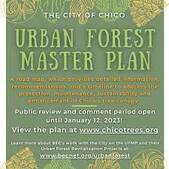
Our guest was Pamm Larry, extraordinary local activist and the creator of the Butte County Local Food Network, a growing project with a number of efforts to help people grow and eat local food and increase food security. She told us about their many projects, including the Garden Blitz, a mobile Farmers' Market, Victory Gardens,and a multi-age cohort project to teach people how to grow and process food. You can learn more, sign up as a volunteer, and donate at https://bclocalfood.org/. Listen to or download the interview: Click.
OTTERSON ROAD BOONDOGGLE with Chris Nelson
SNOW GOOSE FESTIVAL with Mary Muchowski
ECO 635 11 JANUARY 2022
SNOW GOOSE FESTIVAL with Mary Muchowski
ECO 635 11 JANUARY 2022
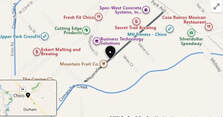
Chris Nelson is the host of the Peace and Justice Program, Fridays, 11:30-1 PM. She is a tireless activist for peace, the environment, people without homes, and many other causes for social and environmental justice. She is currently working to educate the public on the new Otterson Drive extension which, she says, will use taxpayer money to put in a private driveway for a well connected developer, destroying the Comanche Creek Greenway. According to the City website, “The Hegan Lane Congestion Relief Project aims to relieve congestion and improve vehicle, bicycle, and pedestrian circulation in southwest Chico. The study area includes Park Avenue, Midway, Hegan Lane, and Otterson Drive, as well as the trails and intersections that connect to these roadways.”
Download or listen to this interview.
Download or listen to this interview.
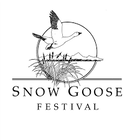
Our second guest was Mary Muchowski, executive director of Altacal Audubon, the host of the Snow Goose Festival of the Pacific Flyway, an event held at the end of January. In addition to describing the festival, she discussed the Pacific Flyway and the birds who use it, as well as the threats to birds and other wildlife due to climate change and declining habitat. Listen or download the interview..
|
SITES RESERVOIR
with regina chichizola, Jim brobeck, and Barbara vlamis
ECO 634 4 jANUARY 2022
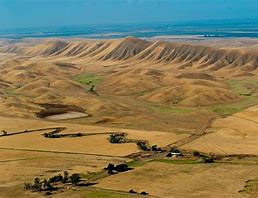
In this program we discussing the proposed Sites Reservoir with three activists who are opposed to the building of the Sites Reservoir in Northern California. Regina Chichizola is Co-Director Save California's Salmon <savecaliforniasalmon.org>, a writer for TruthOut, and an advocate for tribal water rights, clean water, and the salmon. Barbara Vlamis is Executive Director and Jim Brobeck is Policy Analyst for AquAlliance, defending Northstate Waters <aqualliance.net.>. By way of background, we read an Associated Press article dated December 15. Reporter Adam Beam presented what seems to us an even handed description of the project and its perceived pros and cons. <Read article> The plan is to build a new lake in Northern California that, when full, could hold enough water to supply 3 million households for one year. Supporters need about $4 billion to build it. Wednesday’s vote by the California Water Commission means the lake — named Sites Reservoir — is eligible for about $800 million in taxpayer money, or about 20% of the project’s price tag.
Listen to or download the program.
Listen to or download the program.


